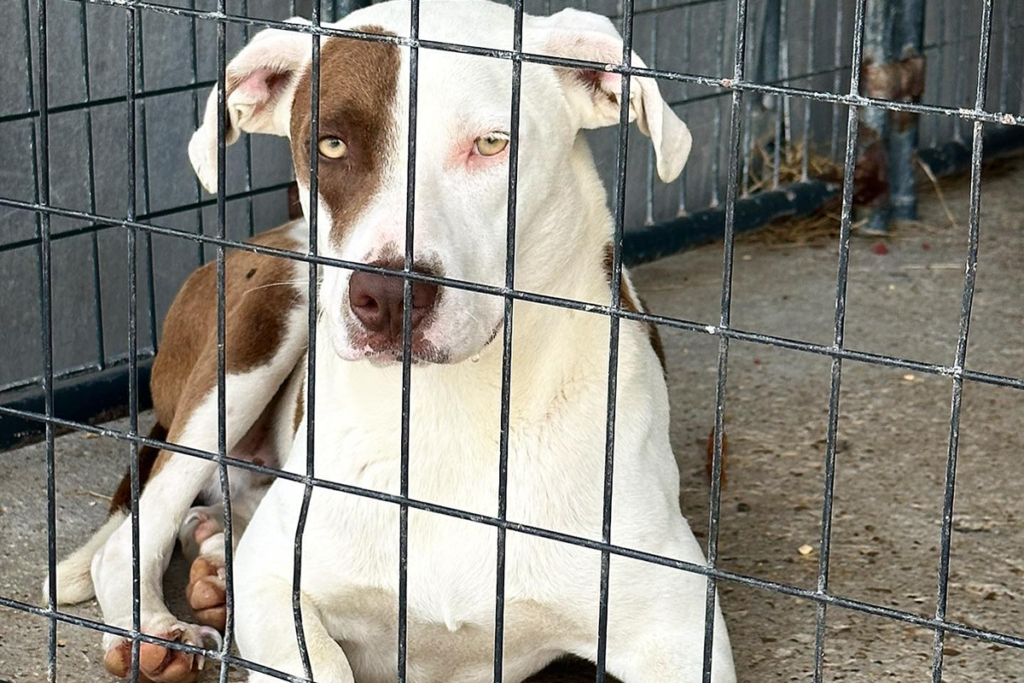Unfortunately, there are many types of animal abuse, and we see all of them far too often, but one form of animal cruelty is not as easily recognizable and now it appears to be on the rise.
There are approximately 200,000 cases of animal hoarding reported each year, while countless others simply go unnoticed. Hoarders slowly accumulate an abnormally large number of animals and do not provide even the most basic elements of care, and unlike most forms of companion animal cruelty, it can go on for years. A single hoarder can have hundreds of victims, and these dogs and cats are often found suffering from severe malnutrition, untreated medical conditions including sores, cancers, advanced dental and eye disease, as well as intense psychological distress. In the U.S. alone, a quarter of a million animals are living this way right now.
Given the number of animals this affects, the degree of abuse and the duration of the cruelty, hoarding is the number one animal cruelty crisis facing communities throughout our country.

Youngstown clinical counselor Trish Taylor explains in most cases she sees, animal hoarding is often a behavioral response to trauma, frequently unresolved childhood trauma. She explains that hoarding animals is a way to try and fill that void, and it becomes too much to handle and maintain.
“Instead of shaming others for doing these things and letting them know there is help out here, it takes a lot of patience.”
– Trish Taylor, Clinical Counseling and Wellness in Canfield
Animal charity says in most of their animal hoarding cases the trauma often comes from the loss of a loved one. When addressing animal hoarding issues experts say it should be approached with compassion. Everyone suffers with animal hoarding. Hoarders frequently neglect their own health, nutrition, and social life because they spend all their time, money, and energy caring for their animals – which is never enough given the number of pets in their home. They are emotionally overwhelmed and trapped by their indecision and sense of responsibility and are often sleep-deprived. Their homes are overcome by animal waste, and they can suffer health problems created by inhalation of ammonia, fleas and tics, and animal-borne illnesses.
And the animals suffer the same fate: poor health, malnutrition, disease, and even death. They are stressed by frequent fights over food; territory or mating in crowded conditions and usually are not spayed or neutered. Hoarded animals can’t retreat when they feel stressed or threatened, which is natural behavior for pets living in healthy homes or in the wild. All hoarding leads to a sad outcome, but the saddest of all is the animals who die in an environment of neglect, filth, and stressful overcrowding as innocent prisoners of well-intentioned but misguided love. These animals are innocent victims, enduring tragic lives with people who are equally trapped.

- Every year 3,500 animal hoarders come to the attention of authorities.
- At least 250,000 animals are affected each year.
- 80% of animal hoarders have diseased, dying, or dead animals on the premises.
- 70% of animal hoarders who come to the attention of authorities are females who are single, widowed, or divorced (although community-sampling studies find an equal ratio of males to females).
- Up to 40% of object hoarders also hoard animals.
- One hundred percent of hoarders relapse without treatment
While the level of cruelty to these animals is obscene, the actions of an animal hoarder can affect an entire community. When animal hoarding situations are reported and the proper authorities are brought in to rescue these animals, the property is often found unlivable due to the fecal matter and urine present in the homes, and they’re condemned. Moreover, a single hoarding case involved dozens, if not hundreds, of animals and can easily overwhelm and even bankrupt a local humane society of shelter. Medical treatment and on-going physical care are required in all of these cases, often long-term.
And what happens once local authorities and law enforcement step in? Not enough. Long term and comprehensive changes to animal law is the only solution to effectively handling hoarding situations and providing help to those suffering from the mental illness at the heart of hoarding. We must educate the public and ensure the members of our communities know how to recognize the signs of hoarding: keeping an abnormally large number of animals, failure to provide proper nutrition, care, and a sanitary environment, all accompanied by evidence of serious neglect.
Here’s what you can do if you suspect someone is hoarding animals:
- Contact your local humane society, police department, or animal control department. There is a great resource on the National Link Coalition website providing direction
- Alert the Animal Legal Defense Fund and they will track the case and offer professional assistance to local officials
Many might dismiss hoarding as malicious, villainous, even evil — but hoarding is rarely these things. In both law enforcement and the mental health community, there’s growing recognition that we need to approach hoarding cases with more empathy and less judgement. When we acknowledge hoarding as a psychiatric illness, treatment can be more effective and the pattern is less likely to be repeated.
Facts and statistics included in this article were collected from the Anxiety & Depression Association of America, American Humane Society, and Animal Legal Defense Fund













